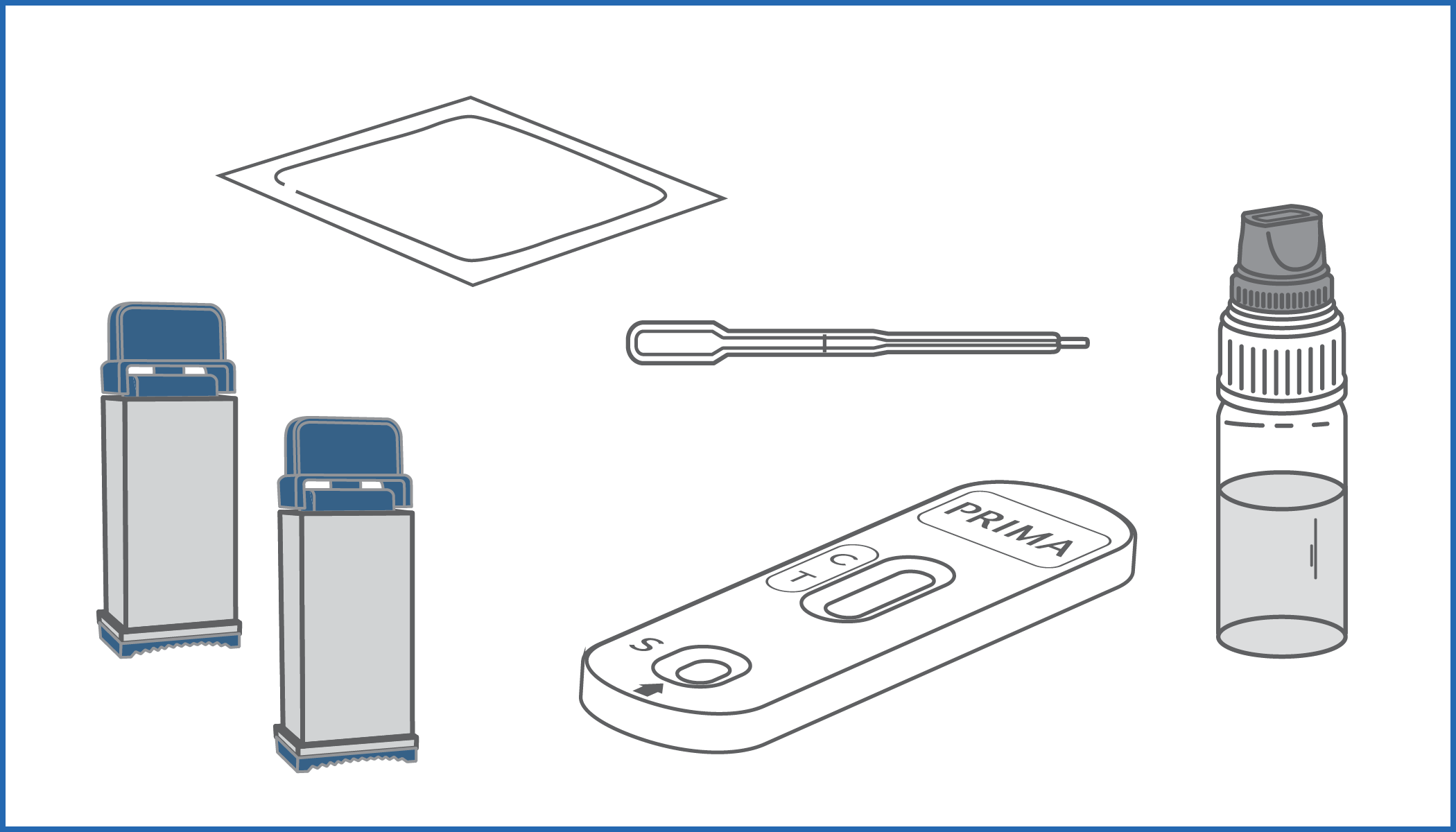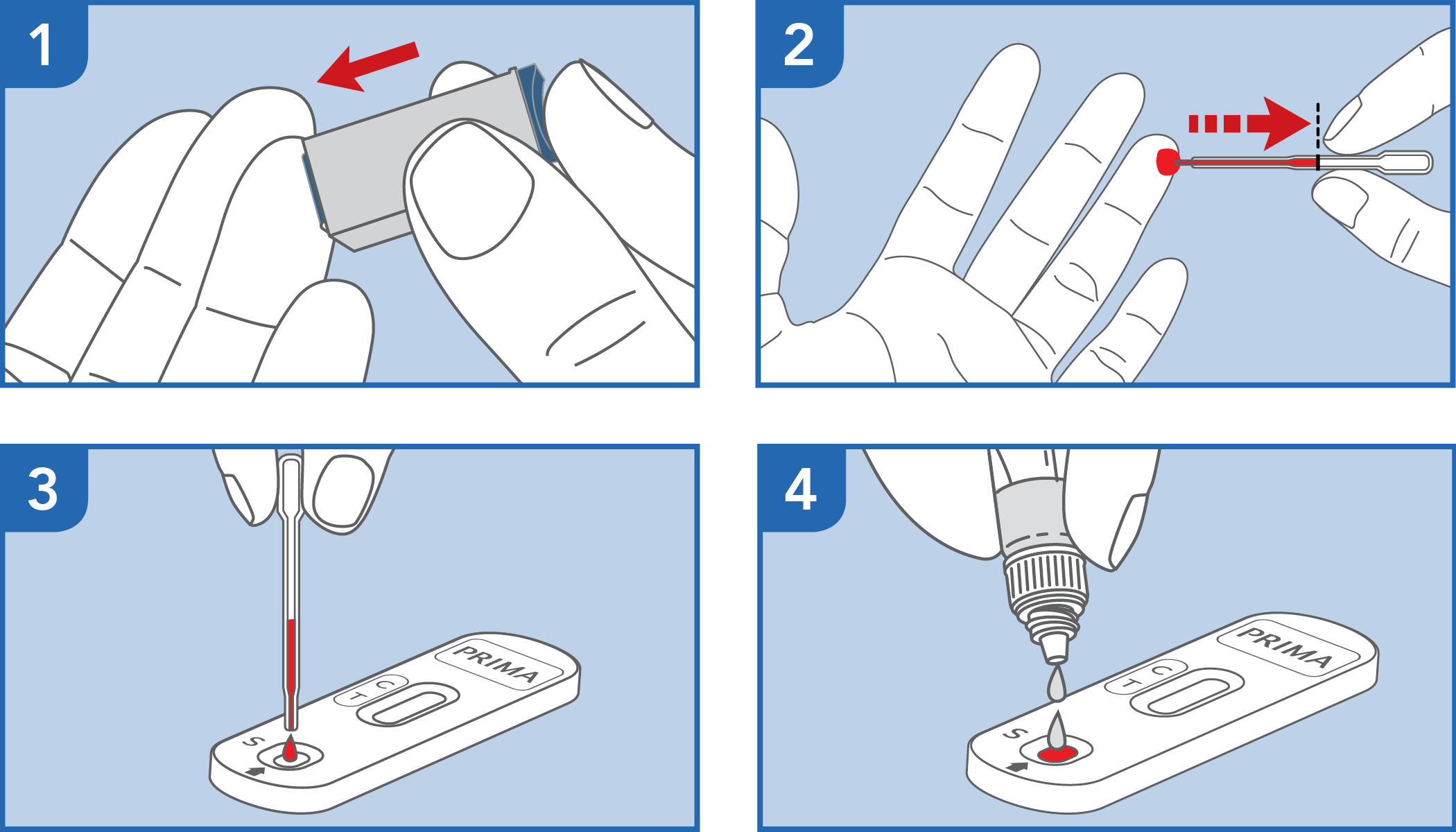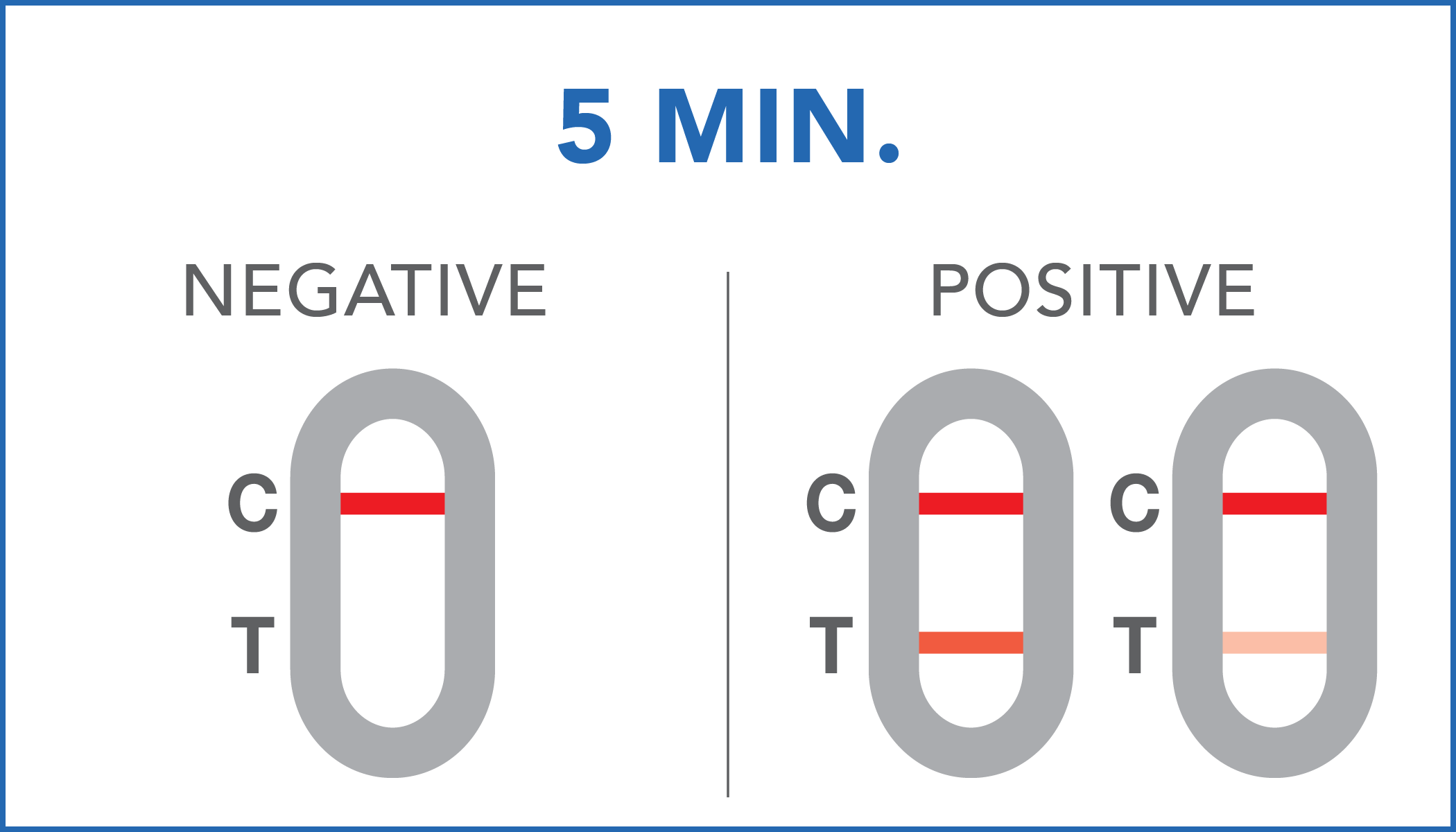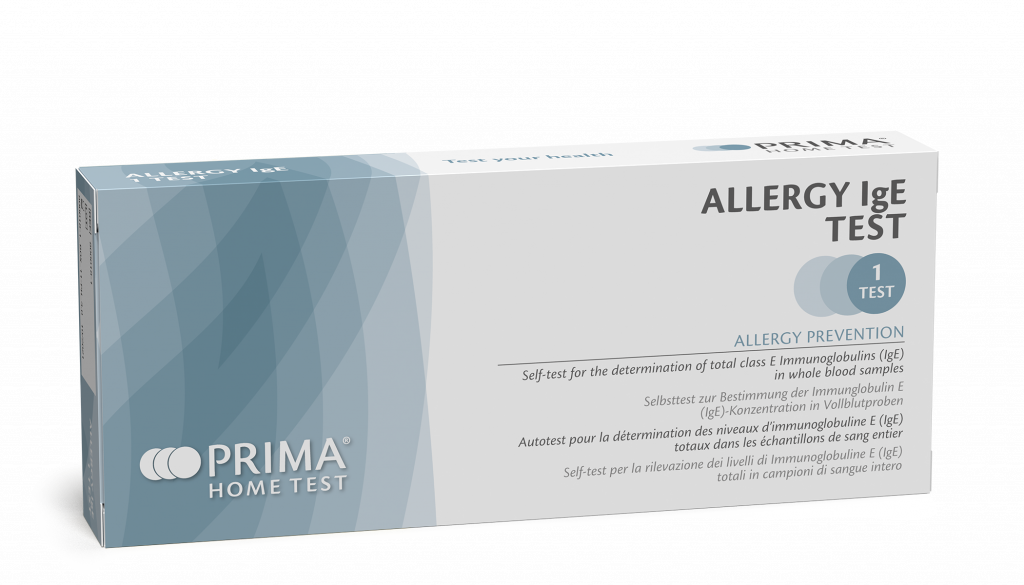



Self-test for the detection of total class Immunoglobulins E (IgE) in whole blood samples


Immunoglobulins E (IgE) represent the class of antibodies mainly involved in allergic reactions. Under normal conditions, IgE are found in blood in small amounts but, when they get in contact with the substance towards which the allergy occurs, their concentration increases.
read moreAn increase in IgE can trigger a series of domino reactions that cause the onset of the main symptoms of an allergic reaction: skin rash, itching, repeated sneezing, tearing, burning eyes and, in some cases, anaphylactic shock. By determining the higher-than-normal IgE levels, a doctor can refer to a more specific search for substances that cause an allergic reaction and define an adequate therapy.
ALLERGY IgE TEST is for all those people who show the symptoms of an allergic reaction: itching and/or skin redness, eyes irritation and repeated sneezing.
read moreEarly identifying a possible allergic reaction allows the doctor to recommend his/her patient in-depth examinations that can detect the cause.
ALLERGY IgE TEST is an immunochromatographic device that detects the presence of higher-than-normal levels of IgE antibodies (cut-off 100 UI/mL) in blood samples.
| Specificity | 91.42% |
| Sensitivity | 93.42% |
| Accuracy | 92.46% |



| Negative | IgE levels are Normal or in any case lower than 100 IU/mL cut-off. |
| Positive | the IgE levels in blood are higher than normal, it is necessary to consult a specialist. |
1. Martins T.B., Bandhauer M.E., Bunker A. M., Roberts W. L.: “New childhood and adult reference intervals for total IgE.” Journal of Allergy and Clinical Immunology. 2014;133(2):589-91.
2. Chang M.L., Cui C., Liu Y.H., Pei L.C., Shao B.: “Analysis of total immunoglobulin E and specific immunoglobulin E of 3,721 patients with
allergic disease”. Biomed Rep. 2015 Jul;3(4):573-577.
3. I. Leonard Bernstein, MD; James T. Li, et Al.: “Annals of allergy, asthma, & immunology.” March 2008; Vol 100, num 3, supplement 3.
The test has been carried out correctly when the instructions for use are followed. It includes the reading time and the interpretation of the results shown at the "RESULTS INTERPRETATION" section of the instructions for use.
A colored line will appear at the control region (C) on the test device, showing that the test performed correctly. The absence of the colored line suggests to repeat the test with a new device and a new sample.
The color and intensity of the lines do not affect the interpretation of the result. The test has to be considered positive regardless of the color intensity of the test line (T).
Check product availability with the local representative in your country
